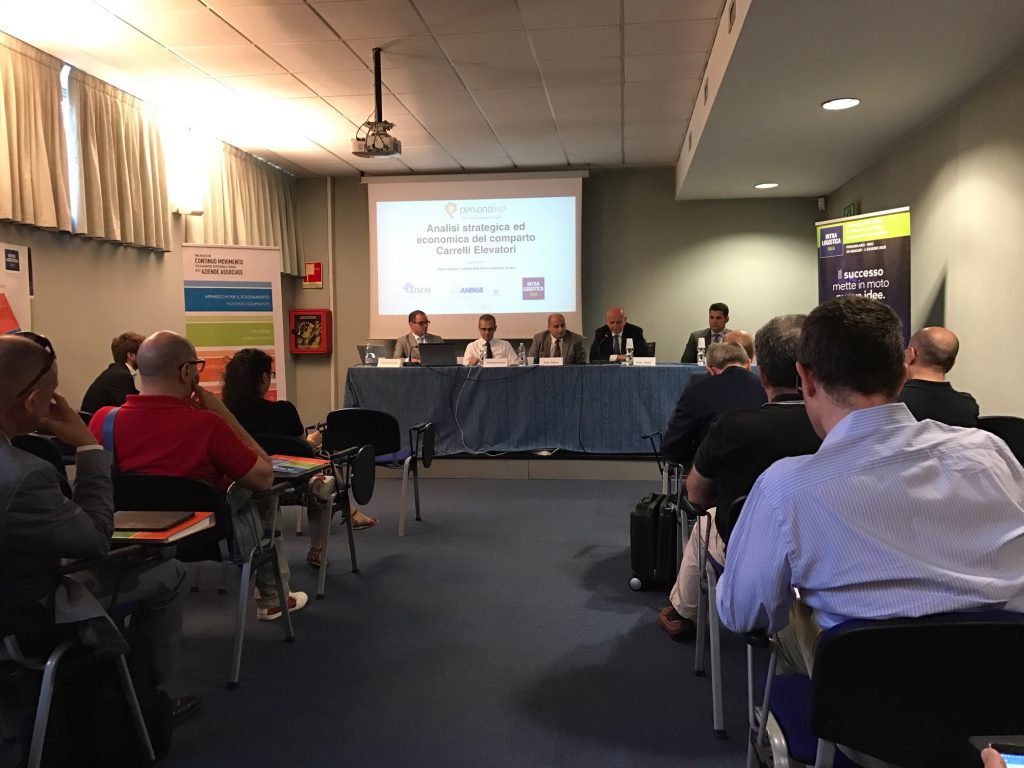Italian Logistics White Paper Analysis Now Available
10th July 2017

In Milan last week INTRALOGISTICA ITALIA and Aisem allied with Anima, jointly presented their White Paper dealing with an analysis of four important sectors in the handling and logistics sector. They describe it as an in-depth research project that “offers a precise picture of the sector’s evolution”.
This White Paper identifies the financial statements, sales trends, production and profitability of 54 companies in the industrial trucks sector, selected from a panel of 143 entrepreneurial businesses present on the national territory. The highest concentration of the companies is in Emilia-Romagna, followed by Veneto, Lombardy and Piedmont. The principal destination market is Europe and approximately 90% of turnover comes from foreign sales. Italy is ranked among the top five on a global level as a manufacturer and exporter. The strategies adopted by the companies that attract clients’ attention include those that demonstrate innovation and technological skills, such as maintenance and fleet distance monitoring and control. An interesting phenomenon discovered in the study is that there is a strong trend towards hiring instead of selling machinery and available technology.
174 companies were evaluated in the lifting sector. The USA, the United Kingdom, Germany, France and Austria were the most receptive markets for this type of product in 2015. Italy was the second importing partner in Germany, after China, whose share was double the Italian one. Lombardy is the region where the greatest number of companies studied was located. 80% of the direct market was made up of small-medium sized companies. Production was almost exclusively internal and national-based and accessories were prevalently tailor-made. There are many companies specialised exclusively in service and maintenance. The product life cycle is very long and this impacts on the obsolescence in the sector, slowing innovation. The division has the greatest number of companies in the sector represented by Aisem. The study also revealed some critical elements for the division, including the obsolete machinery park, as well as a lack of clear regulations and rules and of attention from Institutions.
The numbers are a little lower for cranes, a sector that nevertheless is considered fundamental to Italian handling and logistics. Once again, in relation to crane manufacturing, the geographical concentration shows northern Italy as the main player. Italy is ranked fifth among countries exporting to the United States, as illustrated in the White Paper. A scant figure compared to the value of German exports to the USA that amounts to more than 50% of the total. Manufacturers are working to acquire new international clients via attendance at international tradeshows. From the study it can be deducted that the sector’s future will see an expansion of the manufacturer’s role: he will be not merely a product supplier but also a consultant. The product offer focus is moving consistently towards the services component, passing also here from sales to product hire. Innovation in the crane sector requires investment in used materials and to a lower degree in technical and electronic design, which already boasts a very high level.
The 49 shelving manufacturers that were part of the study export to Europe with a market share of 76%, while sales to the United States are only 2%, despite the latter being the market with the highest potential, but that has difficulties related to local regulations. Half of the companies involved in the study operate with a production logic that expands to various product families (light and commercial industrial shelving). Critical elements that emerged from the analysis included lack of brand strength, a high level of bureaucracy oppressing the Italian market and regulation diversity on both local and regional levels. The market offers a very fragmented demand due to the presence of many small-sized companies, a peculiarity that often obliges them to personalise products for each client and consequently rationalise their production and distribution chains.
Companies or private parties that register at INTRALOGISTICA 2018 by September 29th, 2017 will receive a complimentary copy of this in-depth research project, published in several volumes.

